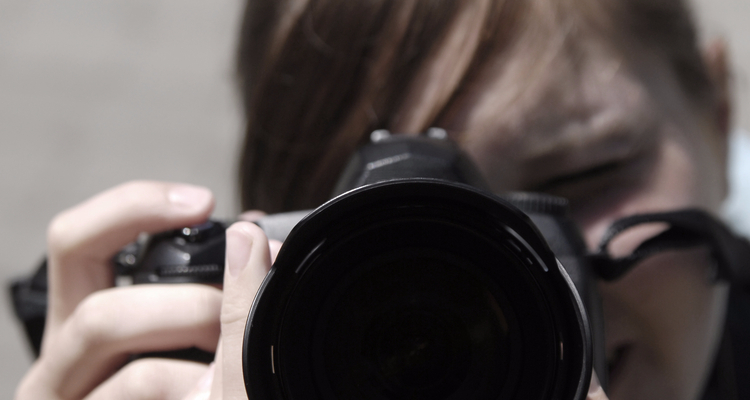
A NASA-Inspired Science Fair Photography Project
It’s Science Fair time! This year consider a project guided by NASA and the importance of the science of cameras. The history of the development of the camera is very interesting and the way that we take pictures has changed a lot since cameras were first produced.
NASA-Inspired Projects: Science With a Camera
The following activities allow you to explore the science of cameras so you can explain and present your information to others in engaging ways. Choose two or three of the following activities and combine them on a display table to showcase the importance of cameras in our history and culture.
1. Create a timeline about the history of cameras and produce a display board to present your timeline information.
Include important dates, information about changes to cameras, and graphics, images and color.
2. Make a pinhole camera with a shoe box using NASA instructions and take a picture.
These homemade cameras take real pictures with long exposure time.
3. Create a display of historic photographs.
Label each photograph with important information about the place, time and event.
4. Make a sky or landscape photo album.
A digital camera is ideal for making a minute-by-minute, hourly, daily or weekly records of natural features like landscapes, gardens, and clouds. A series of photographs can have real scientific value if it covers a long period of time.
You can find out more about how to make photos like these at NASA’s project What Color Is Your Sky? These photos can be rotated and inserted into a calendar to provide an organized record of the sky over the horizon. The photographs provide important insight into cloud coverage, sky color, air pollution and the seasonal growth of grass, plants and trees.
5. Capture photos of unusual things and events
Have you ever seen a halo around the sun or moon? An unusual insect or flower? A tree that has been struck by lightning? A tall column of smoke? Making and saving photographs of unusual sightings and events can be both an enjoyable hobby and a contribution to science. Be sure to save comments about each photo.
6. Do a nature census with a camera.
Do you live in the country? Do you have a yard? Do you live near a park? If you live near the natural world, you can use a camera to conduct a census of plants and animals. The biggest challenge of your census will be finding the proper Latin names for all the soils, rocks and living things that you photograph.
If you can’t find the name of a specific mineral, plant or animal, just use a temporary name, like “Green beetle.” A photographic nature census can prove invaluable to future scientists who study changes in plant and animal communities over time.
Extend Your Knowledge
The GLOBE Program has some interesting ideas for cameras. Find them by entering “camera” in the search box on the GLOBE home page. Introduction to Picture Posts provides great information on how to photograph the sky and the landscape from the same position every day. Find out more about the Picture Post project and see sample photos. Sun and Sky includes a variety of unusual sky color photographs.
Key Questions
- Can you conduct scientific experiments with a disposable film camera?
- List some advantages of using digital cameras to perform scientific activities.
- List several types of scientific activities you can do with a digital camera.
- What is a Picture Post?
